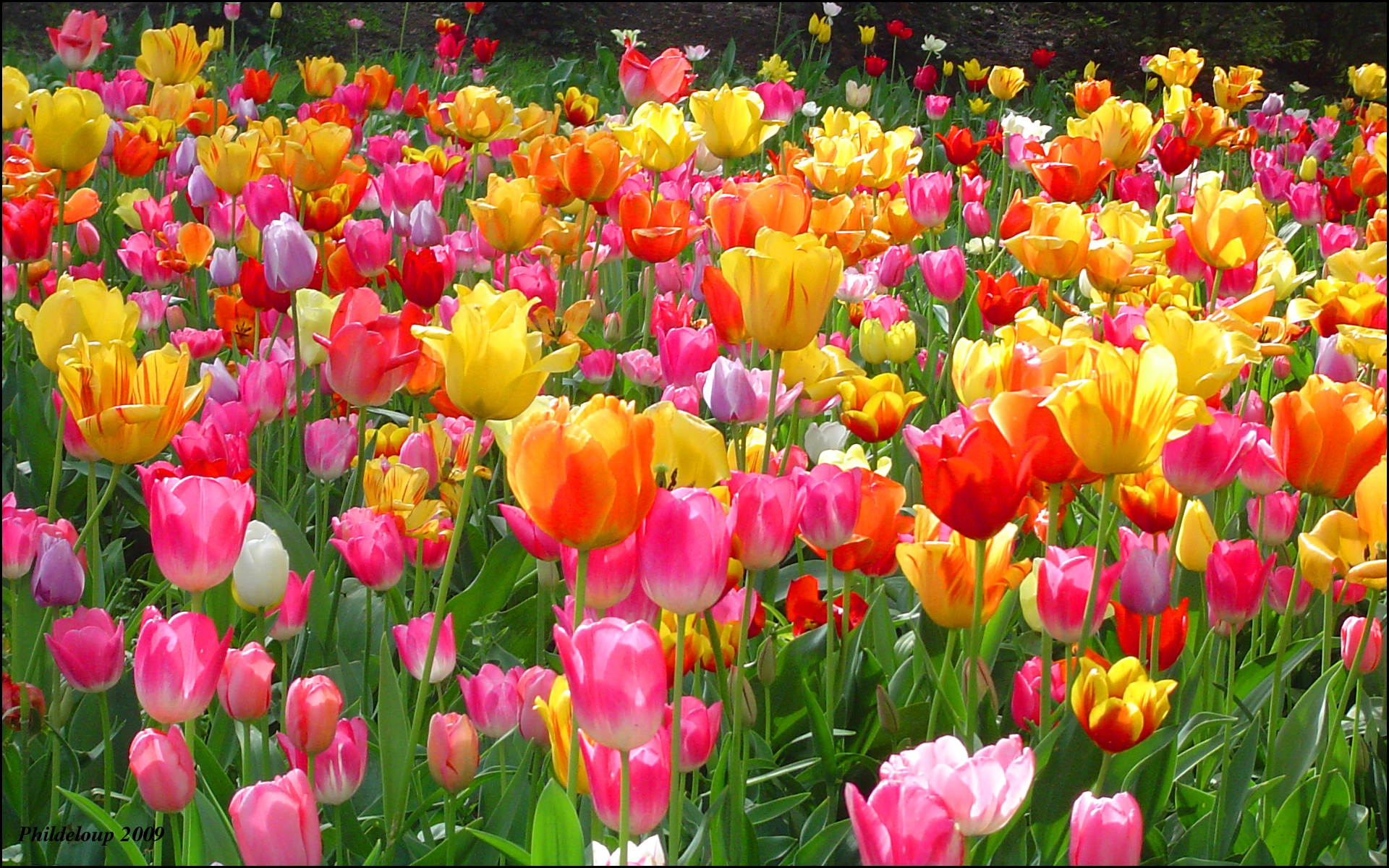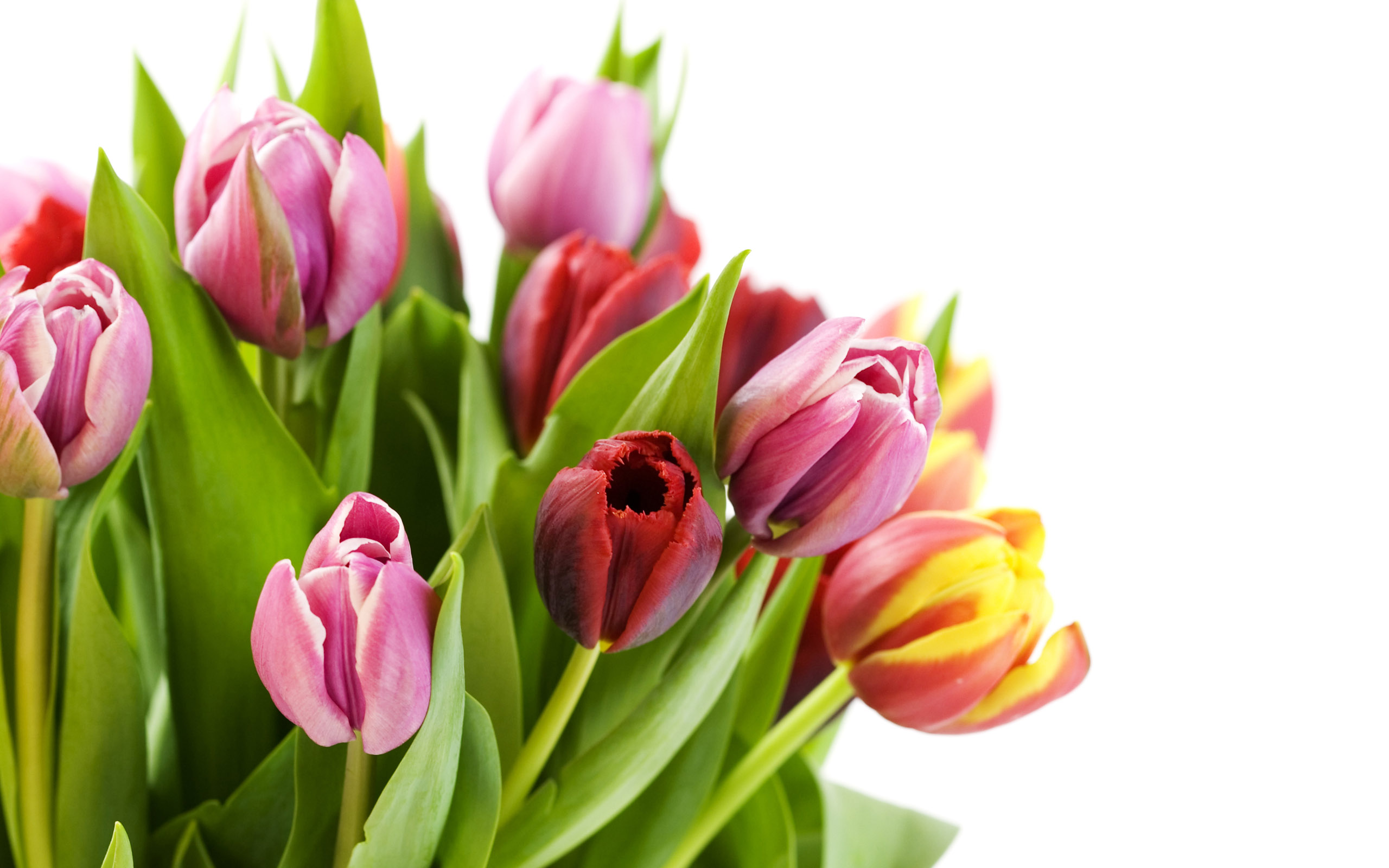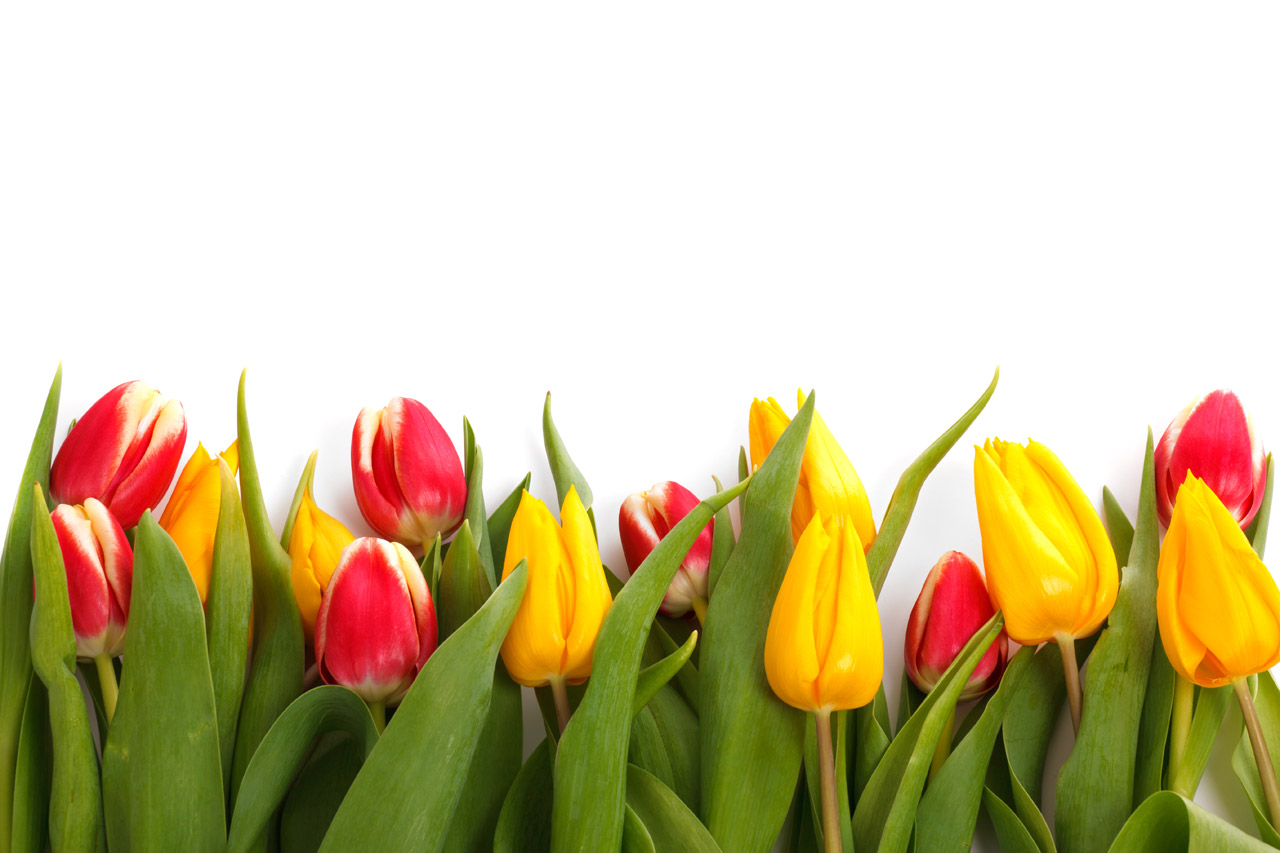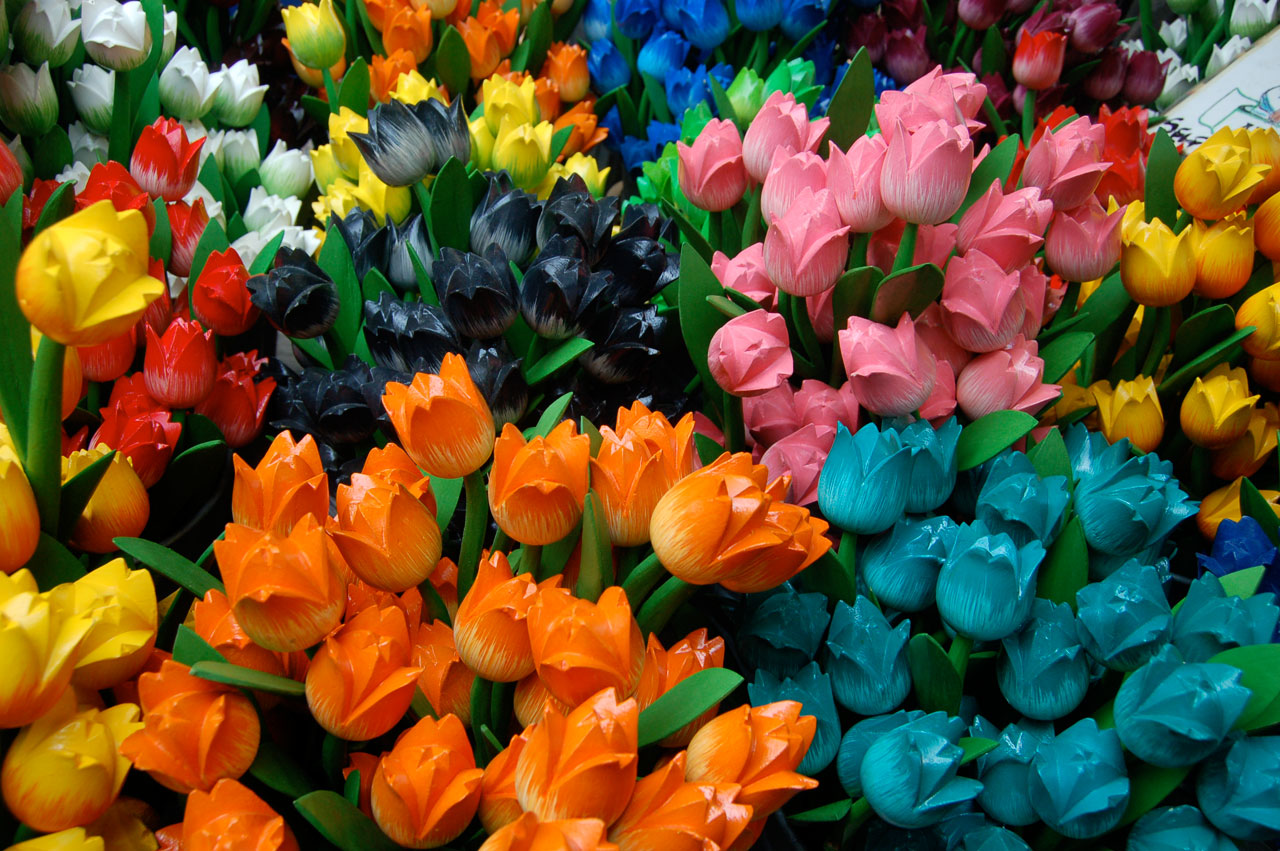Tulips Biography
Tulips are spring-blooming perennials that grow from bulbs. Depending on the species, tulip plants can grow as short as 4 inches (10 cm) or as high as 28 inches (71 cm). The tulip's large flowers usually bloom on scapes or subscapose[further explanation needed] stems that lack bracts. Most tulips produce only one flower per stem, but a few species bear multiple flowers on their scapes (e.g. Tulipa turkestanica). The showy, generally cup or star-shaped tulip flower has three petals and three sepals, which are often termed tepals because they are nearly identical. These six tepals are often marked on the interior surface near the bases with darker colorings. Tulip flowers come in a wide variety of colors, except pure blue (several tulips with "blue" in the name have a faint violet hue).[4][5]
Tip of a tulip stamen. Note the grains of pollen
The flowers have six distinct, basifixed stamens with filaments shorter than the tepals. Each stigma of the flower has three distinct lobes, and the ovaries are superior, with three chambers.[further explanation needed] The tulip's fruit is a capsule with a leathery covering and an ellipsoid to subglobose shape.[further explanation needed] Each capsule contains numerous flat, disc-shaped seeds in two rows per chamber.[6] These light to dark brown seeds have very thin seed coats and endosperm that does not normally fill the entire seed.[7]
Tulip stems have few leaves, with larger species tending to have multiple leaves. Plants typically have 2 to 6 leaves, with some species having up to 12. The tulip's leaf is strap-shaped, with a waxy coating, and leaves are alternately arranged on the stem; these fleshy blades are often bluish green in color.
[edit]Origin of the name
Although tulips are often associated with the Netherlands, commercial cultivation of the flower began in the Ottoman Empire.[citation needed] Tulips, or lale (from Persian لاله, lâleh) as they are also called in Iran and Turkey, comprise many species that together are indigenous to a vast area encompassing parts of Asia, Europe and north Africa. The word tulip, which earlier appeared in English in forms such as tulipa or tulipant, entered the language by way of French tulipe and its obsolete form tulipan or by way of Modern Latin tulīpa, from Ottoman Turkish tülbend ("muslin" or "gauze"), and is ultimately derived from Persian دلبند delband ("Beloved").[8]
In Persia, to give a red tulip was to declare your love. The black center of the red tulip was said to represent the lover's heart, burned to a coal by love's passion. To give a yellow tulip was to declare your love hopelessly and utterly.[9]
On this illustration on the right is shown a tulip's fruit.
[edit]Cultivation
Tulips are indigenous to mountainous areas with temperate climates and need a period of cool dormancy, known as vernalization. They thrive in climates with long, cool springs and dry summers. Although perennials, tulip bulbs are often imported to warm-winter areas of the world from cold-winter areas, and are planted in the fall to be treated as annuals.
Tulip bulbs are typically planted around late summer and fall, in well-drained soils, normally from 4 inches (10 cm) to 8 inches (20 cm) deep, depending on the type planted. In parts of the world that do not have long cool springs and dry summers, the bulbs are often planted up to 12 inches (30 cm) deep. This provides some insulation from the heat of summer, and tends to encourage the plants to regenerate one large, floriferous bulb each year, instead of many smaller, non-blooming ones.[citation needed] This can extend the life of a tulip plant in warmer-winter areas by a few years, but it does not stave off degradation in bulb size and the eventual death of the plant due to the lack of vernalization.
[edit]Propagation
Tulips can be propagated through bulb offsets, seeds or micropropagation.[10] Offsets and tissue culture methods are means of asexual propagation for producing genetic clones of the parent plant, which maintains cultivar genetic integrity. Seed-raised plants show greater genetic variation, and seeds are most often used to propagate species and subspecies or to create new hybrids. Many tulip species can cross-pollinate with each other, and when wild tulip populations overlap geographically with other tulip species or subspecies, they often hybridize and create genetically mixed populations. On the other hand, most commercial tulip cultivars are complex hybrids, and actually sterile. Those hybrid plants that do produce seeds most often have offspring dissimilar to the parents.
Growing saleable tulips from offsets requires a year or more of growth before plants are large enough to flower. Tulips grown from seeds often need five to eight years of growth before plants are flowering size. Commercial growers usually harvest the tulip bulbs in late summer and grade them into sizes; bulbs large enough to flower are sorted and sold, while smaller bulbs are sorted into sizes and replanted, for sale in the future. Holland is the world's main producer of commercially sold tulip plants, producing as many as 3 billion bulbs annually, the majority for export.[11]
Tulips
Tulips
Tulips
Tulips
Tulips
Tulips
Tulips
Tulips
Tulips
Tulips
Tulips
Tulips
Tulips
Tulips
Tulips
Tulips
Tulips
Tulips
Tulips
Tulips



















No comments:
Post a Comment